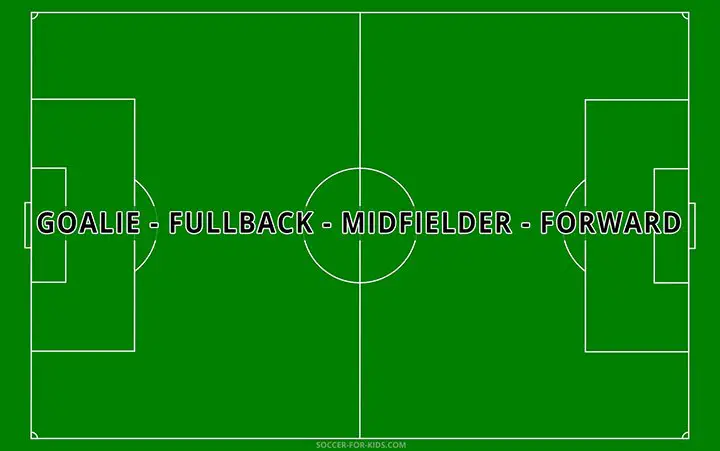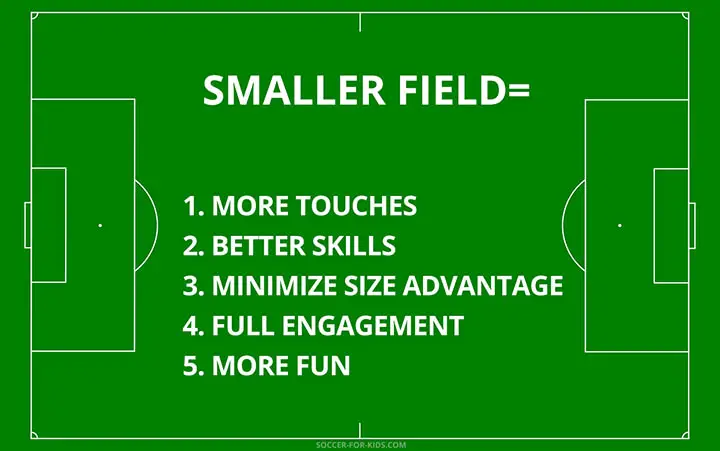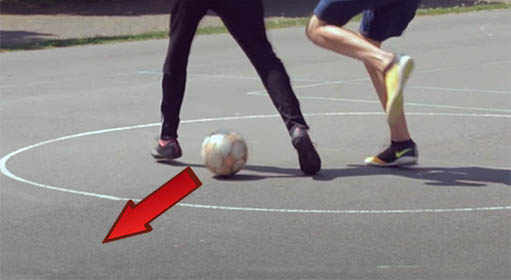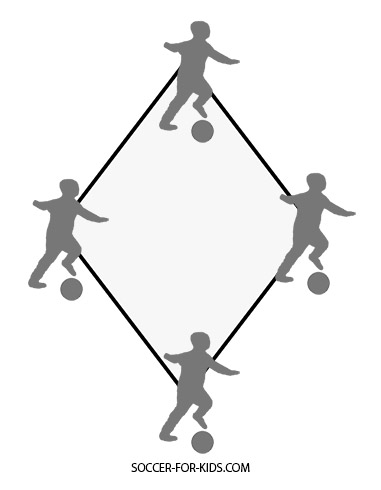The Different Positions in Youth Soccer
It can be confusing trying to figure out the different positions in youth soccer. It's important to understand each position a player may take on the field because that's determines his or her duties during the playing of the game.
This simple beginners guide will explain the basic positions that young children will play in soccer games. There are essentially 4 different positions in youth soccer with some variations in the duties of each player when the number of players on the field changes.
1. goalie
OTHER NAMES: Goalkeeper. Keeper
MAIN DUTY: Prevent the soccer ball from crossing the goal line into the net. Goalie can use her hands to stop the ball from going into the goal provided the ball is within the borders of the penalty area.
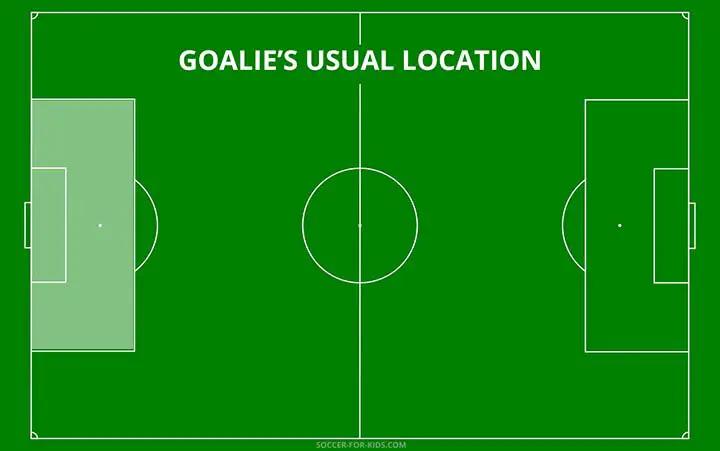 Goalkeeper's position themselves within the penalty area the large majority of the game
Goalkeeper's position themselves within the penalty area the large majority of the gameLOCATION ON THE FIELD: Almost always inside the rectangular area known as the penalty area. Goal keepers may leave the area occasionally to distribute the ball downfield with her feet. Only out of desperation at the end of a game will a goalie possible stray far away from protecting the goal and try to support the offense.
The exact size of the penalty area depends on the age group of the players and the size of the soccer field.
2. defender
OTHER NAMES: Fullback. Back. Sweeper. This position is sometimes more precisely described as center-back for defending the middle and wingbacks who defend more toward the outside areas of the field.
MAIN DUTY: Defense. They defend their own goal, preventing the opposition from scoring and breaking up dangerous scoring opportunities. Depending on the game's situation defenders can press forward at times to support and participate offensively.
The sweeper got this name because their job is to "sweep up" any attacking moves or clean the soccer ball out of the area. Sweepers are often the last line of defense in front of the goalie
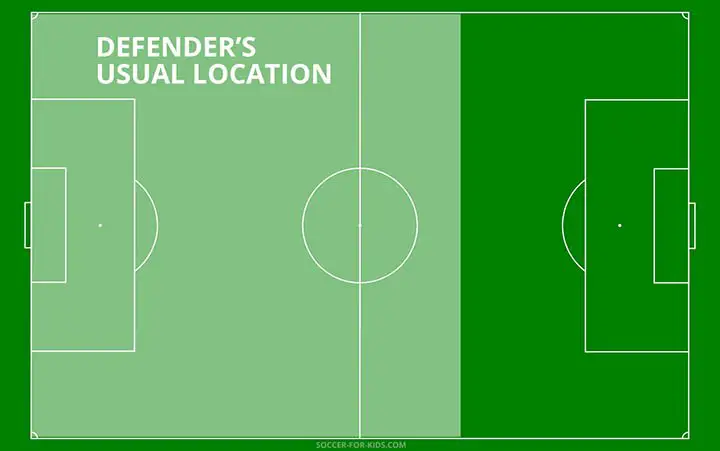 Usual position of defensive soccer players
Usual position of defensive soccer playersLOCATION ON THE FIELD: Backs will spend the majority of time on their own half of the field, but sometimes support the offense by pressing forward, particularly on set plays like corner kicks in their opponents side of the field.
Left backs play primarily on the left side of the defensive zone. Right backs play primarily on the right side of the defensive zone.
As an Amazon associate, soccer-for-kids receives a small commission for qualifying purchases. There is no cost to you. Zero!
3. midfielder
OTHER NAMES: Halfback. Stopper
MAIN DUTY: Midfielders connect the defenders and the forwards. Generally they have excellent passing skills. With larger formations of 7 or more players, midfielders can be deemed offensive midfielders or defensive midfielders. All midfielders have both both defensive and offensive duties.
Stoppers are defensive midfielders. They are the first line of defense, whos job it is to stop the initial attacks in the middle of the field by the opposition. The stopper usually plays between the fullbacks and the midfielders.
 Midfielders common position, although playing in the corners is not unusual.
Midfielders common position, although playing in the corners is not unusual.LOCATION ON THE FIELD: Halfbacks usual stay between the 18's, but can visit the corners too. Left midfielders play primarily on the left side of the defensive zone. Right midfielders play primarily on the right side of the defensive zone.
4. FORWARD
OTHER NAMES: Striker. Wing
MAIN DUTY: Score goals. Like many other sports the ones who score often get the most attention. Forwards are players that stay in an attacking position. The term striker usually refers to a single player that plays nearest the oppositions goal. Wings are forward that play wider, somewhat closer to the sidelines.
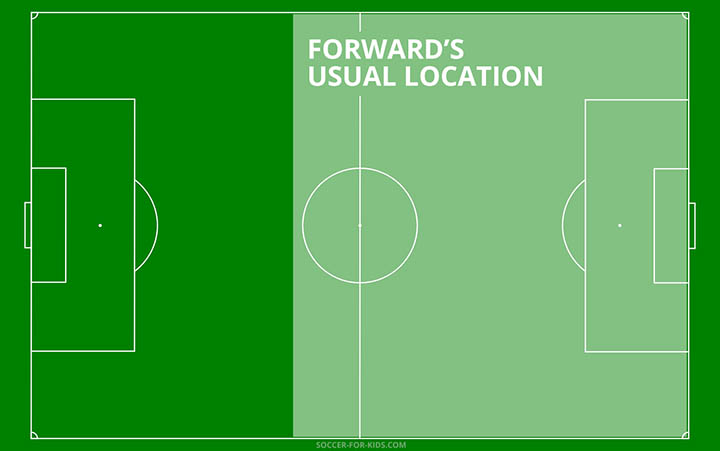 Forwards, strikers, and wings play most of their game on the opponent's side of the field.
Forwards, strikers, and wings play most of their game on the opponent's side of the field.LOCATION ON THE FIELD: All forwards tend to push "forward" on the field toward the opponents goal when possible. Strikers tend to play in the middle and regular forwards may play anywhere along the front line, often designated as right wing or left wing.
final thoughts on the different positions in youth soccer
These are the basic 4 different positions in youth soccer, goalkeepers, backs, mids, and forwards. The number of positions is more limited with small sided soccer and there are several good reasons for playing on smaller fields with a smaller number of players (See this post).
With toddler soccer and preschool aged kids, these positions are sometimes simplified to simply just offense and defense positions. The complexities of positions and formations dictate that you keep it as simple as possible for the youngest soccer players.
As you watch your kids play and learn, it's fascinating that many of them naturally gravitate toward a defensive or offensive style of play. However, most coaches agree that kids should get a variety of different position assignments for the overall best development of the player.

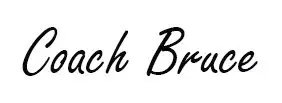
Soccer coach Bruce Lovelace started playing soccer in 1974 when, as a young boy, he constructed his own makeshift soccer goal. He played in high school, then in college and beyond. He started to coach his own children in the 1990s and then ran a Soccer Shots franchise for 12 years. Now, Coach Bruce publishes the soccer-for-kids.com website. Find out more about youth soccer coach Bruce Lovelace and what inspires this website.
Soccer-for-kids.com is a participant in the Amazon Services LLC Associates Program, an affiliate advertising program designed to provide a means for sites to earn advertising fees by advertising and linking to Amazon.com
